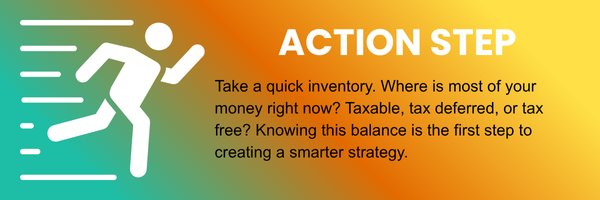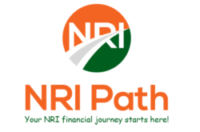On the path to financial freedom, how you put your money matters just as much as how you earn it. The U.S. tax system conceptually divides savings into three distinct “buckets,” each with its own tax treatment. Understanding these buckets helps you build a flexible, tax-efficient retirement strategy. For NRIs, this framework is especially useful when coordinating U.S. accounts with global assets.

The Three Tax Buckets
Every dollar you earn or invest typically lands in one of three categories:
1. Taxable Bucket
This bucket holds assets that are taxed each year as they generate income or gains. It typically includes checking and savings accounts, brokerage accounts that hold stocks, ETFs, or mutual funds, and certificates of deposit.
When you earn interest, receive dividends, or sell an investment at a gain, those earnings are reported annually on your tax return. Short-term capital gains and ordinary interest are taxed at regular income rates, while long-term capital gains and qualified dividends receive preferential tax rates. Although these accounts offer complete liquidity and easy access to cash, the downside is the annual “tax drag” that can slow long-term compounding.
Pros: Immediate access and full liquidity.
Cons: Interest, dividends, and capital gains are taxed each year, reducing after-tax growth over time.
2. Tax Deferred Bucket
The second bucket allows you to postpone paying taxes until you withdraw the money in retirement. Common examples include Traditional IRAs, 401(k)s, 403(b)s, 457(b)s, SEP IRAs, and SIMPLE IRAs.
Contributions to these accounts are often made with pre-tax dollars, lowering your current taxable income. The funds then grow tax-deferred for years, meaning you owe no taxes on interest, dividends, or capital gains until you withdraw the money. When distributions begin, they are taxed as ordinary income.
Pros: Contributions may reduce current taxable income, and growth compounds tax-deferred for years.
Cons: Withdrawals are taxed as ordinary income and are subject to Required Minimum Distributions (RMDs)—starting at age 73 for those born between 1951–1959 and age 75 for anyone born in 1960 or later.
3. Tax Free Bucket
The final bucket provides the most favorable long-term tax treatment: your money grows tax-free, and qualified withdrawals are tax-free as well. This category includes Roth IRAs, Roth 401(k)s, and properly structured cash-value life insurance policies.
Pros: Qualified withdrawals are tax-free after age 59½ and five years; growth is tax-free; Roth IRAs and Roth 401(k)s have no Required Minimum Distributions (RMDs) under current law. Cash-value life insurance can provide tax-advantaged access through withdrawals or loans if the policy remains in force, with no IRS income or contribution limits, though premiums are subject to policy design and underwriting limits.
Cons: Roth contributions are made with after-tax dollars and may be limited for higher-income earners (phase-out thresholds expected to begin around $164,000 for single filers and $243,000 for joint filers in 2025). Life-insurance policies require ongoing premiums and careful management to avoid lapse or taxation.
For NRIs, Roth accounts simplify U.S. taxation and estate planning, though treatment abroad may differ—cross-border tax advice is recommended.
Why Buckets Matter
If most of your wealth sits in the tax-deferred bucket, you could face substantial taxes later in retirement. A balanced mix across all three buckets allows you to control taxable income year by year, perform Roth conversions during low-income windows, manage Medicare and Social Security taxation, and preserve flexibility for international withdrawals or estate transitions.
Ultimately, tax diversification gives you options. As tax laws, markets, and personal needs evolve, a well-balanced allocation across taxable, tax-deferred, and tax-free accounts ensures you can adapt—keeping more of your wealth working for you, wherever life takes you.

The Next Chapter: Unlocking the Roth and Mega Backdoor
Now that you understand the buckets, the next step is learning how to fill the tax free bucket strategically. We’ll explore Roth IRAs, Roth conversions, and the Mega Backdoor Roth—powerful tools that can accelerate your climb toward financial freedom.
